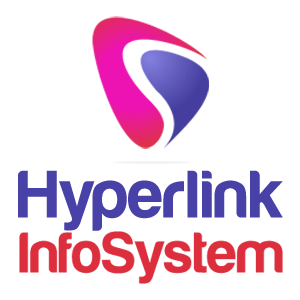
Online development has become increasingly important in the high-level era, propelling the creation of websites and online apps that manage businesses, facilitate communication, and enhance user experiences in general. Leading this creative advance is still full-stack web development, which covers web applications from both the front and back end. This comprehensive guide aims to provide children with a strong foundation in full-stack web development, covering key concepts, advancements, career options, and doable steps to begin this exciting journey into the world of full stack web development guide
Full-stack web development denotes the capacity to handle an online application's front-end and back-end components. With their broad skills, full-stack fashioners are qualified to handle every stage of program development, from managing databases and servers to organizing client communications and carrying out exchange thinking.
Full-stack designers utilize lingo like HTML, CSS, and JavaScript up front to create engaging and perceptive messages that users can immediately relate to. They guarantee that the configuration is adaptable, intuitive, and optimized for various devices and applications.
While full-stack engineers write code that responds to unexpected increases in server demand and communicates with the front-end, the back-end of a web application integrates server-side progression. This combines exchange rationale, security, client confirmation, and data limit management. Developments on the back end have always included programming languages such as JavaScript (Node.js), Python (Django, Container), Ruby (Ruby on Rails), PHP (Laravel), and databases such as MySQL, PostgreSQL, or MongoDB.
Proficiency in front-end and back-end development empowers full-stack designers to create fully functional web apps, individually or as a team. The IT industry highly values this flexibility because it enables creators to incorporate all perspectives throughout a project's lifecycle and provide solid, flexible designs.
Acquiring knowledge of full-stack web development equips them with flexibility in addressing client-side and server-side perspectives on web development. This flexibility allows designers to work solo or collaboratively within groups to create whole online experiences. By understanding it and using strategies throughout the entire stack, architects can plan front-end and back-end capabilities with reliability, resulting in robust and practical web application development. Adaptability in full-stack development does not so much rethink boundaries of critical thinking as it empowers producers to quickly increase requirements and adapt to rapidly advancing technologies.
Gaining proficiency in full-stack web development provides a comprehensive understanding of the complete web headway lifecycle. Developers incorporate bits of information into web application conception, planning, use, testing, delivery, and support. This broad viewpoint creates persuasive communication with partners, clients, and coworkers. It also facilitates more efficient adventure work processes and revamps the project management skills of the executives. Comprehending the entire process enables experts to formulate guidance, foresee challenges, and implement plans that adapt to expedition objectives and customer presumptions.
The tech industry is in high demand for full-stack planners due to their capacity to control and oversee online headway excursions from beginning to end. Career opportunities for full-stack engineers span a variety of industries, including Internet business platforms, financial services, healthcare associations, and new venture development. Junior engineers can work up to senior roles as programmers, lead developers, or accessible specialists. Full-stack developers are increasingly in demand as businesses prioritize technological transformation, adaptability, and web-based proximity. Understanding full-stack web development guidelines provides access to various career paths and opportunities for skillful advancement in a competitive work environment.
Reaching full-stack web development allows engineers to carry out web projects from inception to completion. Full-stack developers are free to design, implement, and evolve both front-end and back-end communication features without depending on specific components for each component. This independence fosters innovation, growth, and creative thinking, inspiring designers to explore unexplored ideas, experiment with cutting-edge creation, and create unique web apps tailored to particular customer or business requirements. Full-stack improvement opportunities enable designers to take responsibility for their work, stick to their objectives, and provide exceptional results that satisfy clients' needs and industry regulations.
HTML represents the structure and content of website pages, becoming the backbone of online development. It uses markings to refer to elements, including headings, sections, images, and shapes, providing a standardized interface that users can interpret and see in web browsers.
Website developers can use CSS, which handles the display and style of HTML components, to change their destinations' appearance, feel, and responsiveness.. CSS promotes plan consistency, enhances the client interface experience, and guarantees uniformity across recognizable devices and screen sizes.
JavaScript is a flexible programming language that gives website pages intelligence and a lively behavior style. Planners can manage client events, approve outline data sources, govern DOM (Report Dissent Illustrate), and create liveliness, improving client commitment and practicality.
Front-end frameworks such as Exact, Answer, and Vue.js provide pre-built components, state organization strategies, and instruments for successful delivery. These frameworks facilitate the development of complex single-page applications (SPAs) with improved client communication and intuitive features, streamline progress chores, and promote code reuse.
Ruby (Ruby on Rails), PHP (Laravel), Python (Django, Container), JavaScript (Node.js), and Java (Spring Boot) are examples of server-side languages that handle business logic and reasoning. These colloquialisms require fashioners to manage client requests, maintain data, interact with databases, and generate enthusiastic server responses.
Web applications use data sets to store, manage, and retrieve data. Social data sets suitable for coordinated data and sophisticated queries are SQL (e.g., MySQL, PostgreSQL). NoSQL data sets, like Redis and MongoDB, provide flexibility in handling unstructured or semi-organized data while allowing for equal application scalability.
Server environments such as Carafe (for Python), Django (for Python), Express.js (for Node.js), and Spring Boot (for Java) provide frameworks and libraries to construct robust server-side applications. These conditions ensure competent data handling and server-side duties via supervising directing, middleware coordination, task management, and data set intuition.
APIs facilitate communication and information sharing between specific PC software applications or organizations. Full-stack web development extensively uses Silent APIs (Illustrative State Trade) to represent endpoints for creating, retrieving, resizing, and deleting resources over HTTP. APIs facilitate reliable collaboration and data synchronization in web applications by mediating disputes between front-end communicators and back-end organizations.
Master the fundamentals of front-end headway first. Get HTML to create the layout and content of web pages, CSS to style and plan designs, and JavaScript to give web applications intelligence and a flaming personality.
Examine popular front-end frameworks such as Vue.js, Answer, and Exact. These frameworks provide reusable components, state organization strategies, and potent delivery tools that streamline progression chores and rethink efficaciousness in fostering organic client communication.
Choose a server-side language and framework (such as Python with Django or Node.js with Express) to start working on the back end. Pay close attention to controlling data set activities, overseeing client meetings, implementing server-side reasoning, and guaranteeing safe data transmission between client-side interactions and server-side apps.
Obtain capacity in NoSQL or SQL (Coordinated Request Language) data sets based on usage requirements. Acquire knowledge of request strategies, standardization methods, data set plan concepts, and request streamlining to effectively store, retrieve, and manage data for online applications.
Expert Git is a dispersed transformation control framework necessary for collaborative program enhancement. Discover how to maintain adventure history and perception while creating stores, monitoring modifications, overseeing branches, consolidating codebase adjustments, and successfully resolving disagreements.
Examine Loosening up APIs to learn how to create, construct, and utilize APIs in web applications. Acquire Data serialization plans (e.g., JSON, XML), confirmation tools, programming interface documentation, and web development best practices for integrating with external organizations and finishing data exchange features between front-end and back-end components.
Use your skills by creating full-stack projects that combine front-end and back-end developments. Put your attention on completing adventure necessities, handling client savvy, coordinating APIs, and improving application performance. Send adventures with containerization tools like Docker or cloud platforms like AWS or Heroku to demonstrate your prowess in managing and delivering web apps in verified conditions.
Keep your design updated with the newest developments, best practices, and examples of web enhancement. Safely navigate creative networks, attend events, visit studios, and contribute to open-source challenges to increase your knowledge, hone your skills, and maintain your integrity in the dynamic area of full-stack web development.
Common Challenges:
For full-stack planners, managing the complexity of both front-end and back-end components simultaneously might be overwhelming. The main challenges are maintaining code consistency, guaranteeing a predictable combination across distinct application layers, and optimizing execution across evolving client devices and applications. Monitoring complexity necessitates in-depth research, careful planning, and adherence to web development best practices in strategy and development techniques.
In full-stack headway, ensuring dynamic application security is paramount. Engineers should implement strict safety measures to guard against flaws, data breaches, and unauthorized access to private data. Strategies include:
- Obtaining secure coding expertise.
- Implementing confirmation and approval tools.
- Encrypting data transfers.
- Overseeing routine security audits and assessments to manage risks appropriately.
A crucial test is setting up web apps that can grow to accommodate increasing client activity, data volume, and application complexity. Plans for flexibility include using level scaling approaches; data set execution optimization, partial reservation completion, and efficient application resource delivery through cloud structure. Maintaining flexibility throughout and diligently verifying the functioning of applications are essential to providing reliable and responsive online experiences as customer needs evolve.
Solutions:
Continuous learning is essential for full-stack innovators to maintain their leadership in advancing frameworks, standards, and industry advancements. Safely progress your education with classes, studios, and certifications to broaden your knowledge, hone your skills, and maintain a significant presence in the continuously evolving field of web development guide for beginners. Examine underutilized tools, resources, and systems that can improve efficiency and provide you the confidence to tackle challenging advancement problems.
During the headway lifespan, identifying and resolving problems in general requires extensive testing and investigation. Oversee escalating unit, integration, and execution tests to support application value, guarantee long-term code quality, and progress execution. Utilize research tools and techniques to identify mistakes, deconstruct problems, and improve the efficiency of the code, creating a consistent and flexible application environment.
A strong team effort is the foundation of successful full-stack improvement endeavors. Encourage open communication, teamwork, and information sharing among group members, partners, and subject-matter experts. Manage deft techniques, oversee traditional stand-up social events, and employ flexible organization tools to promote transparency, streamline workflows, and make significant advancements with skill. Collaborative projects promote progress, collective critical thinking, and unwavering forward motion, propelling project success and improving most group productivity.
Embarking on the journey to become a full-stack website professional provides an opportunity to master the incredible artistry of creating dynamic and adaptable web applications. With proficiency in both front-end and back-end development, knowledge of the entire web development lifecycle, and an understanding of continuous learning and teamwork, designers can unlock countless opportunities for career advancement and competent advancement within the dynamic web development industry.
Mastering full-stack web development requires the flexibility to explore client-side and server-side aspects of web applications, a thorough understanding of progress structures, and the capacity to develop and carry out adventures independently. While challenges like complexity, security concerns, and the need for adaptability are inevitable, strategies like constant learning, rigorous testing, and productive teamwork entice architects to overcome roadblocks and provide excellent, safe, and adaptable online solutions.
Full-stack engineers play a critical role in shaping electronic experiences, influencing events, and expanding creatively into uncharted territory as progress accelerates. Understanding full-stack web development guarantees an endlessly fulfilling career path full of opportunities to form significant obligations to the mechanized globe, regardless of whether you're starting your web headway journey or looking to develop your inclination set. Remain secure, stay curious, and keep honing your craft to succeed in the rapidly expanding field of full-stack web headway.
